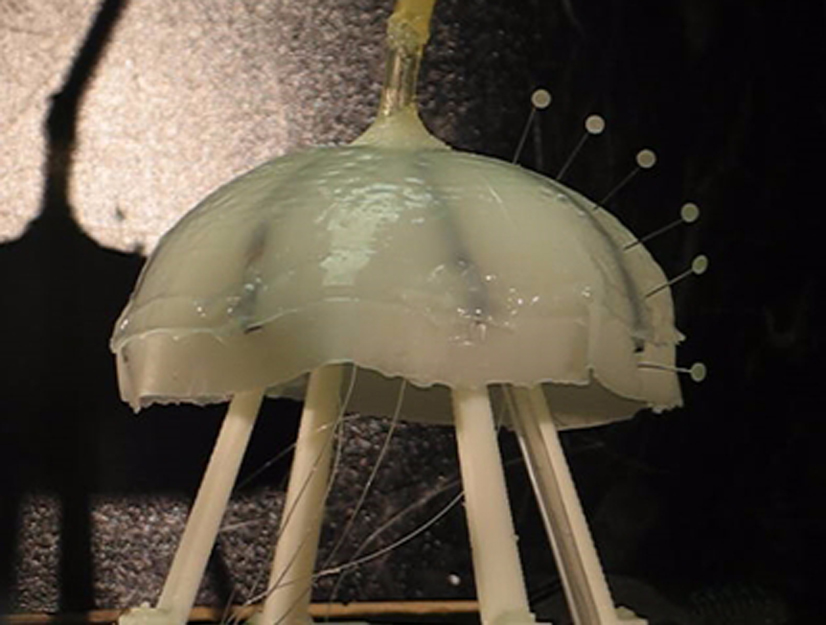A team working out of Virginia Tech and the University of Texas at Dallas is building a robotic jellyfish that mimics the real thing. Here it is in action:
The robot gets its power from hydrogen and oxygenate, which reacts with platinum to create heat, driving the jellyfish’s “muscles.” One day, the jellyfish won’t even need to come with a separate fuel source, Discovery News reports:
Although the current version requires tanks of hydrogen and oxygen to provide the fuel, the researchers hope the robot, called “Robojelly,” may one day be able to fuel itself by gathering hydrogen and oxygen from its surroundings or a regenerating source, allowing it to run indefinitely.
What’s the use of a self-propelling, self-fueling, jellyfish-looking robot? Well, funding for the work comes from the Navy, and one of the authors writes on his website that he’s working on “unmanned underwater vehicles … which will be used for surveillance purposes.” That could mean tracking ocean-borne pollution, or it could mean “civilian and military surveillance.” At least they don’t sting? Yet.




